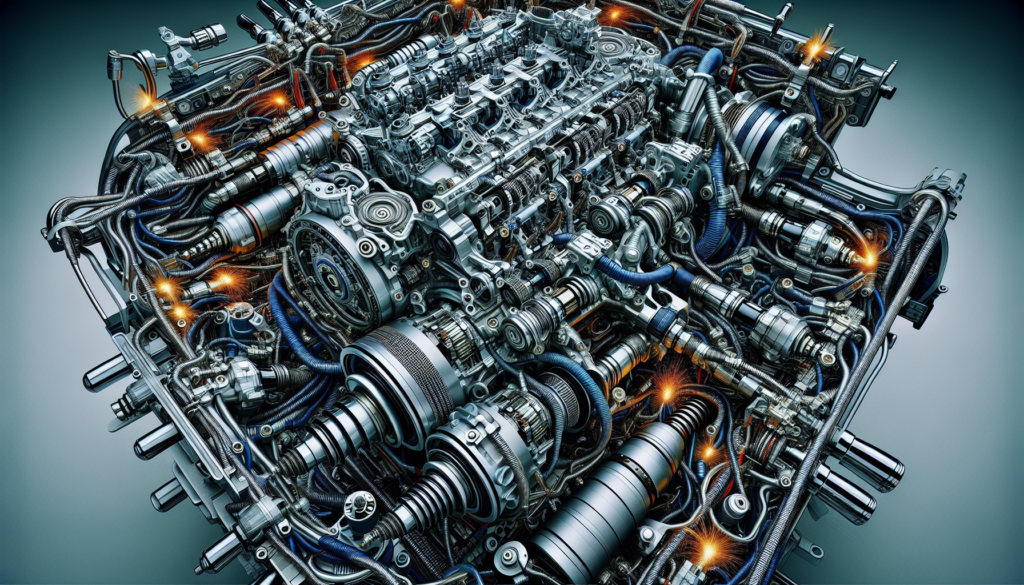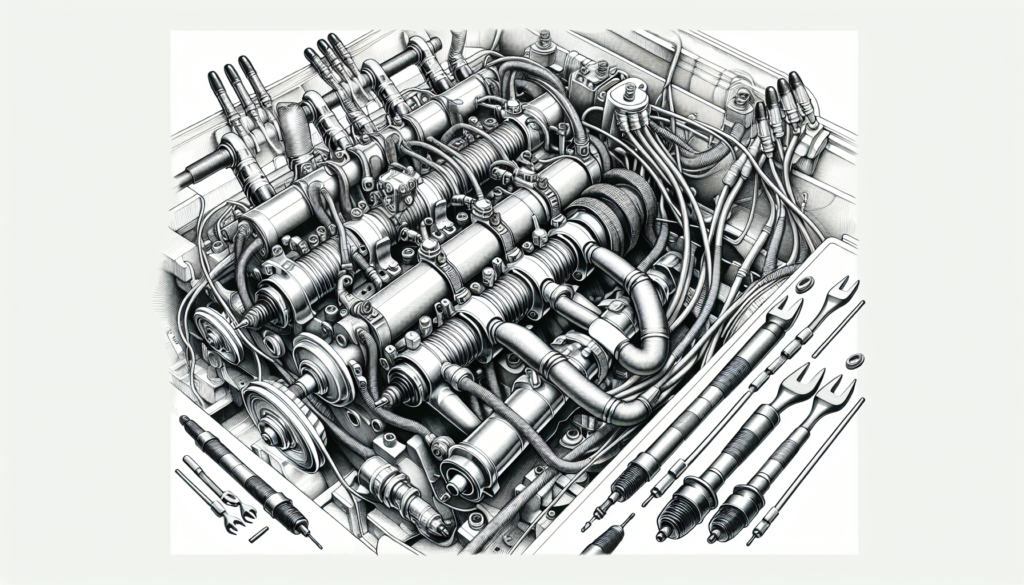Ever experienced a heart-sinking moment when you turn the key in your boat’s ignition switch and nothing happens? That momentary panic can put a damper on your otherwise perfect boating adventure. Well, worry not! “How To Troubleshoot Ignition Problems In Your Boat Engine” is here to help. This essential guide provides step-by-step insights to help you confidently resolve ignition issues on your own, potentially saving you the hassle and cost of calling a professional mechanic. So, next time your boat engine refuses to start, don’t panic, instead, refer to this handy guide. Your trusty marine companion is about to get back on track.

Understanding the Basics of Boat Ignition System
When it comes to maintaining your boat, understanding the ignition system is crucial. Much like in a car, this system is responsible for igniting the fuel-air mixture in the engine’s combustion chambers, resulting in the power that drives your boat forward. Understanding this system can help you troubleshoot problems and perform regular maintenance to keep your boat running at its best.
Components of a Boat Ignition System
The major components that make up a boat’s ignition system are fairly similar to those you’d find in a land vehicle. Key parts include the ignition switch, safety kill switch, and spark plugs. The battery provides the system with electrical power, while the ignition coil and condenser help to generate the voltage for the spark plugs.
How a Boat Ignition System Works
When you turn the ignition switch on, electrical energy from the battery is directed to the ignition coil. The coil works to amplify this energy, creating a high voltage that’s sent to the spark plugs. When this voltage hits the spark plug, it ignites the fuel-air mixture within the engine’s cylinders, causing the engine to start.
Common Problems with Boat Ignition Systems
Like any mechanical system, boat ignition systems can experience a range of issues. These can include problems with starting the engine, failures to keep the engine running after start, and erratic engine performance. These issues can be caused by a variety of factors, from faulty spark plugs or switches to a problematic kill switch or wiring problems.
Identifying Common Symptoms of Ignition Problems
Understanding the signs of ignition problems is key to keeping your boat running smoothly.
Boat Engine Fails to Start
One of the most obvious symptoms of ignition trouble is a boat engine that refuses to start. This issue could suggest a problem with the spark plugs, ignition switch, or even with the starter motor or solenoid.
Boat Engine Starts but Quickly Dies
If your engine starts, but then dies quickly, this could be a sign of numerous problems, including a faulty kill switch or problems with the fuel system.
Boat Engine Misfires or Runs Erratically
Ignition issues can also cause your boat’s engine to misfire, or to run in an erratic or inconsistent manner. This could indicate issues with the spark plugs, ignition coil, or distributor cap and rotor.
Difficulty Turning Over the Engine
If your boat’s engine is hard to turn over, this could signal a problem with the battery or starter motor.
Checking Basic Starting Conditions for the Boat Engine
Before diving into specific parts of the ignition system, it’s advisable to check the overall starting conditions for your boat’s engine.
Ensuring the Safety Measures
To ensure safety, make sure the boat is in neutral and that the safety lanyard is connected before trying to start the engine.
Checking the Throttle Position
Next, ensure the throttle is in the right position. A throttle that’s too far open or closed can inhibit engine start-up.
Examining the Fuel System
Checking the fuel system for blockages or leaks can also help ensure your engine is getting the fuel it needs.
Testing the Battery Power
Before digging too deep into the ignition system, it’s always good to check the battery for sufficient voltage. If the battery is not adequately charged, it can cause starting problems.

Inspecting the Spark Plugs
Spark plugs are a critical component of the ignition system and can cause a host of problems if they aren’t functioning properly.
Knowing When to Check Spark Plugs
Spark plugs should be checked if your engine is experiencing problems with starting, running erratically, or misfiring.
How to Remove and Inspect Spark Plugs
To check your spark plugs, carefully remove them and inspect for signs of wear and tear, fouling, or cracking.
Determining Spark Plug Faults
Signs of a faulty spark plug could include a heavy carbon buildup or a bent or damaged electrode.
Replacing Faulty Spark Plugs
If you unearth problems in your spark plugs, replacement is typically an easy and inexpensive fix.
Checking the Ignition Switch and Wiring
In addition to the spark plugs, there are other electrical components in the ignition system that may need examining.
Identifying Signs of a Faulty Ignition Switch
A faulty ignition switch is often a culprit if your boat struggles to start consistently.
How to Test the Ignition Switch
You can test for a faulty ignition switch by using a multimeter to probe the switch’s terminals. If the switch is operational, the multimeter will show a current when the ignition switch is in the “on” position.
Inspecting the Wiring for Damage or Corrosion
Inspect the wiring in your ignition system for any visible damage or corrosion. Any frayed, burnt, or corroded wires may need replacement.
Reviewing the Kill Switch and Safety Lanyard
A kill switch and safety lanyard are critical safety features in a boat’s ignition system.
Understanding the Role of the Kill Switch
The kill switch, when connected to the safety lanyard, can provide a vital safety function in the event of an emergency. It’s designed to shut off the engine if the lanyard is pulled away from the switch, typically if the boat’s operator falls overboard.
Troubleshooting Potential Kill Switch Issues
If your engine is having trouble starting, ensure the kill switch is in the correct position and that the safety lanyard is properly attached.
Testing the Safety Lanyard
To test your safety lanyard, pull it from the kill switch while the engine is running. The engine should stop immediately.
Examining the Distributor Cap and Rotor
The distributor cap and rotor are parts of the ignition system that can lead to starting and running problems if they’re damaged or worn.
Knowing When to Check Distributor Cap and Rotor
These components should be checked if your engine starts but runs erratically, or if it misfires.
How to Remove and Inspect the Distributor Cap and Rotor
Remove the distributor cap and rotor according to your boat’s manual, then inspect for signs of wear, damage, or corrosion on the interior and exterior surfaces.
Recognizing the Signs of Wear and Tear
Heavy corrosion, cracks, or erosion on the contact points are all signs that your distributor cap or rotor may need replacement.
Reinstalling or Replacing the Components
Once you’re done inspecting, reinstall the components or replace if they’re worn or damaged.
Testing the Ignition Coil and Condenser
The ignition coil and condenser are other parts that can cause starting or running problems if they’re faulty.
Understanding the Functions of the Ignition Coil and Condenser
The ignition coil works to generate the high voltage that’s sent to the spark plugs, while the condenser helps to ensure this voltage distribution is smooth and effective.
How to Test the Ignition Coil and Condenser
Similar to the ignition switch, you can test these components using a multimeter. Faulty components usually show a resistance that’s outside the specifications outlined in your boat’s manual.
Replacing Faulty Ignition Coil or Condenser
If these components prove to be faulty, they should be replaced to ensure proper functioning of the ignition system.
Inspecting the Starter Motor and the Solenoid
The starter motor and solenoid play key roles in turning the engine over during start-up.
Recognizing Symptoms of a Faulty Starter Motor or Solenoid
If the engine is hard to turn over, or if there’s a clicking noise but the starter motor doesn’t engage, these could be signs of faulty starter motor or solenoid.
How to Test the Starter Motor and Solenoid
To test these components, use a multimeter to check the voltage at the starter motor while attempting to start the engine. If the starter motor or solenoid is not receiving adequate voltage, it may need replacement.
Troubleshooting Starter Motor or Solenoid Problems
In addition to testing, you can inspect these components for visible signs of damage or wear, including corrosion or burnt out terminals.
Replacing a Failed Starter Motor or Solenoid
If issues with the starter motor or solenoid are discovered, you should replace the faulty parts to prevent further engine starting problems.
Seeking Professional Help
While understanding your boat’s ignition system can enable you to perform basic maintenance and troubleshooting, there will be situations where professional help is necessary.
When to Consult a Marine Mechanic
If you’re having consistent problems starting or running your boat’s engine, or if testing and inspecting the components outlined above doesn’t reveal a clear issue, it might be time to consult a marine mechanic.
Preparing Your Boat for a Professional Inspection
Before taking your boat to a mechanic, be sure to document the problems you’re having, along with any testing or maintenance you’ve completed on your own. This can help the mechanic diagnose and fix the problem more efficiently.
Understanding the Mechanic’s Assessment
Once the mechanic has inspected your boat, they should provide an assessment of any underlying issues and necessary repairs. Don’t hesitate to ask for further explanation or details if needed, so you can fully understand the treatment that your boat needs.
In conclusion, understanding and maintaining your boat’s ignition system is a valuable skill for boat owners. Taking the time to familiarize yourself with basic operation and troubleshooting can save you time, money, and stress in the long run.

